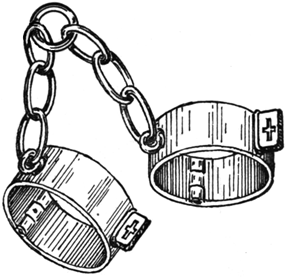Kira Domratchev, Associate Gowling WLG (Canada) LLP
The litigators amongst us are no doubt familiar with the fact that matters of public policy affect the decisions of our Courts.
Public policy does not tolerate a wrongdoer profiting from their crime. The “Slayer Rule” or the “Criminal Forfeiture Rule” is where the person criminally responsible for the testator’s death is disentitled from taking any benefit out of their victim’s estate.[1] This rule applies to both murder and manslaughter but an exception to the rule arises where a person is found not criminally responsible due to a mental disorder.[2] This rule may be invoked on a balance of probabilities by a civil court, even where a criminal conviction has not been entered.[3]
In a recent decision of the Alberta Court of King’s Bench in Magnuson Estate, 2023 ABKB 305, the Court was faced with an Application by, Joseph Magnuson, the personal representative of Janet Elizabeth Magnuson’s estate, who relied on the “Slayer Rule” in the absence of a criminal conviction. Specifically, Joseph sought summary judgment to void the residual gift in Janet’s Will in favour of her husband, Corey Anderson.
In support of his application, Joseph swore an Affidavit deposing to the following:
- The RCMP identified Corey as a person suspected of causing Janet’s death;
- Joseph was advised by the RCMP that after being identified as a suspect in Janet’s death, Corey overdosed on drugs; and,
- Joseph was advised by the RCMP that Corey surrendered to the RCMP, confessed to causing Janet’s death and charged with first degree murder. A newspaper article advising of Corey’s first degree murder charge was attached to Joseph’s Affidavit.
No evidence was put forward as to whether Corey pleaded guilty or been found guilty by a Court of any crime involving Janet’s death. Corey was served with notice of this proceeding but did not appear at the hearing.
The Court noted that the “Slayer Rule” is to be exercised with restraint and mere negligence or contribution to the testator’s death, in the absence of criminal misconduct, probably does not engage the rule.
The Court found that the evidence surrounding Corey’s confession to Janet’s death and his alleged overdose was hearsay. The Court also found that the existence of the criminal charge was hearsay, as there was no indictment before the Court and the Court further commented as follows at paragraph 32 of the decision:
More fundamentally, a criminal charge is not persuasive evidence of the facts of the underlying allegation. The charge is an allegation, not proof. While the charge reflects someone’s assessment of possible evidence against Mr. Anderson, the evidence is largely undisclosed before me. It is also trite law that a person is presumed innocent until proven guilty.
The Court also held that (i) the confession was imprecise in that it was not clear, based on the evidence, whether Corey was admitting to culpable criminal conduct rather than something less blameworthy, such as negligence; and (ii) the evidence did not address Corey’s mental state at the time of the alleged offence.
Accordingly, the Court found that Joseph did not meet the evidentiary burden of a balance of probabilities. As a result, it was held that the application was premature and should await the outcome of the criminal proceeding.
As of January 30, 2024, Corey was ordered to stand trial but no trial date has been set as of yet. Depending on the outcome of that proceeding, this may not be the last hear of this matter.
[1] Oldfield v Transamerica Life Insurance Co. of Canada, 2002 SCC 22 at para. 11.
[2] Dhingra v Dhingra Estate, 2012 ONCA 261.
[3] Nordstrom v Baumann [1962] SCR 147.


0 Comments